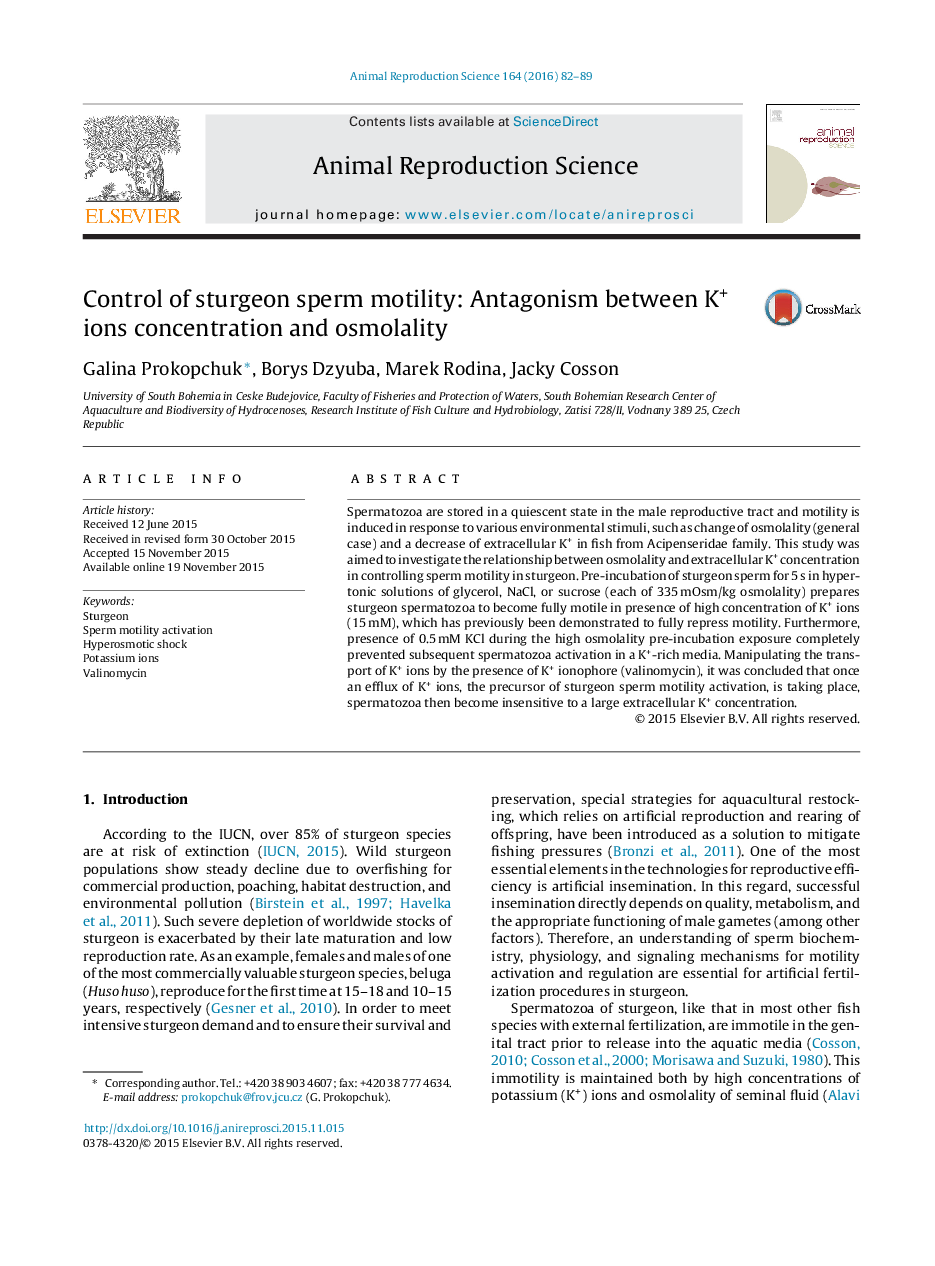| Article ID | Journal | Published Year | Pages | File Type |
|---|---|---|---|---|
| 2072567 | Animal Reproduction Science | 2016 | 8 Pages |
•Hyperosmotic shock allows to by-pass the K+ inhibition of sturgeon sperm motility.•Sturgeon sperm motility may be activated by use of an alternative signaling pathway.•Pressure surge caused by hyperosmotic shock triggers an efflux of K+ ions.•After efflux of K+ sturgeon spermatozoa become insensitive to extracellular K+ ions.
Spermatozoa are stored in a quiescent state in the male reproductive tract and motility is induced in response to various environmental stimuli, such as change of osmolality (general case) and a decrease of extracellular K+ in fish from Acipenseridae family. This study was aimed to investigate the relationship between osmolality and extracellular K+ concentration in controlling sperm motility in sturgeon. Pre-incubation of sturgeon sperm for 5 s in hypertonic solutions of glycerol, NaCl, or sucrose (each of 335 mOsm/kg osmolality) prepares sturgeon spermatozoa to become fully motile in presence of high concentration of K+ ions (15 mM), which has previously been demonstrated to fully repress motility. Furthermore, presence of 0.5 mM KCl during the high osmolality pre-incubation exposure completely prevented subsequent spermatozoa activation in a K+-rich media. Manipulating the transport of K+ ions by the presence of K+ ionophore (valinomycin), it was concluded that once an efflux of K+ ions, the precursor of sturgeon sperm motility activation, is taking place, spermatozoa then become insensitive to a large extracellular K+ concentration.
